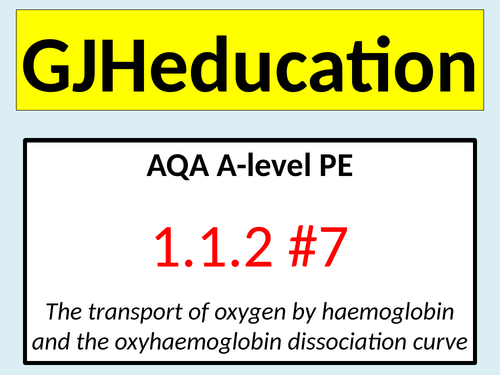

This detailed lesson describes how oxygen is transported by haemoglobin and explains the changes in saturation in the oxyhaemoglobin dissociation curve. The informative PowerPoint has been designed to cover the 1st part of the transportation of oxygen section in the applied anatomy and physiology unit of the AQA A-level PE specification.
The lesson begins by using a quiz round from the game show POINTLESS to engage students and to introduce haemotology as the study of diseases related to blood. This includes haemoglobin and students will be reminded that this is the protein that is found in the red blood cells of humans. They will learn that it is a protein consisting of four polypeptide chains with a haem group on each chain and that it is this haem molecule which has a high affinity for oxygen to enable oxyhaemoglobin to be formed. Key terminology such as affinity are continually used to deepen understanding of this topic and to make links to those covered in upcoming lessons such as the Bohr shift. Moving forwards, students will plot an oxyhaemoglobin dissociation curve. The understanding of the changes in saturation can be poorly understood so a step-by-step method with simple questions to discuss is used to ensure that the fundamentals are embedded. Ultimately, students will understand that haemoglobin becomes fully saturated at the high partial pressures of oxygen at the alveoli at the lungs, before transporting it to the cells of the working muscles where it dissociates to release the oxygen at the lower partial pressures there.
Something went wrong, please try again later.
Thank you!!
Report this resourceto let us know if it violates our terms and conditions.
Our customer service team will review your report and will be in touch.